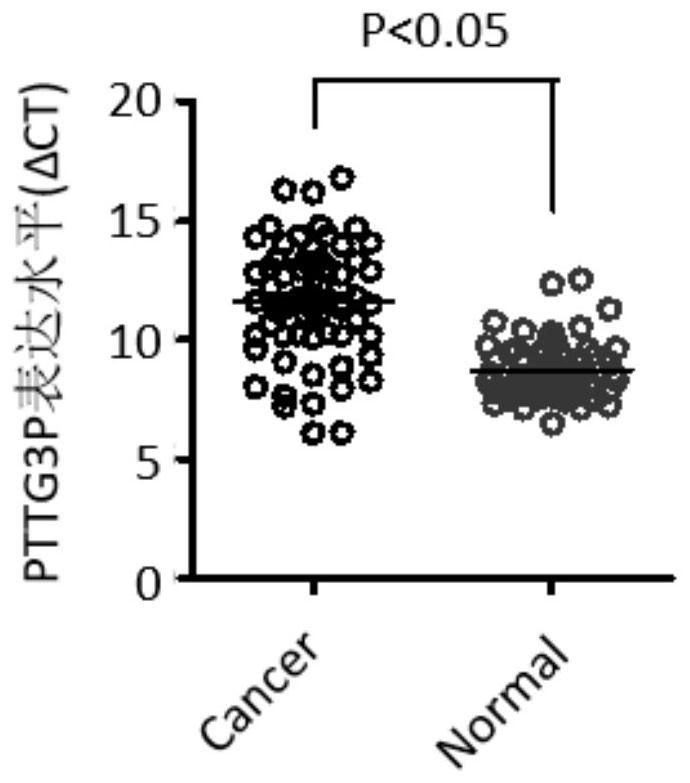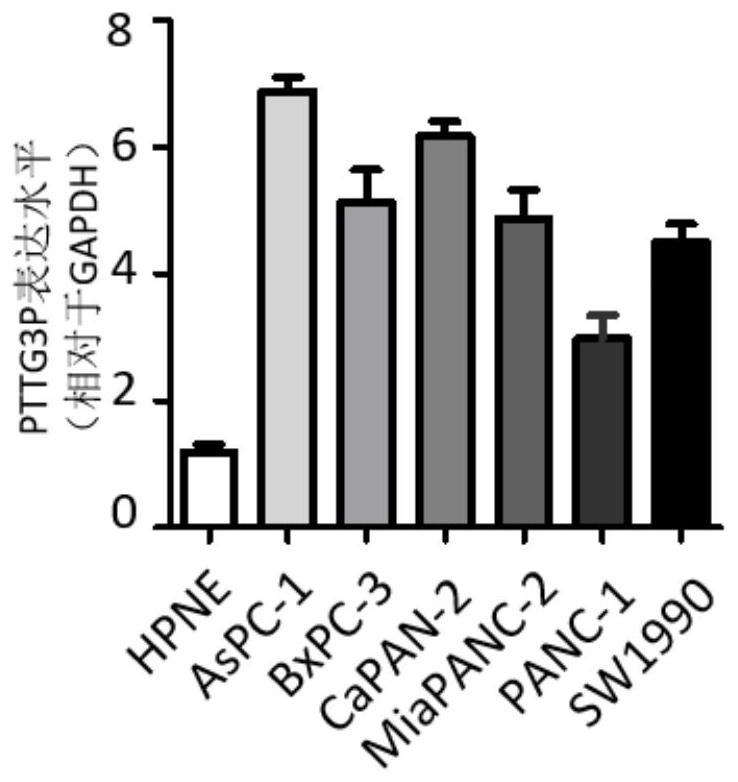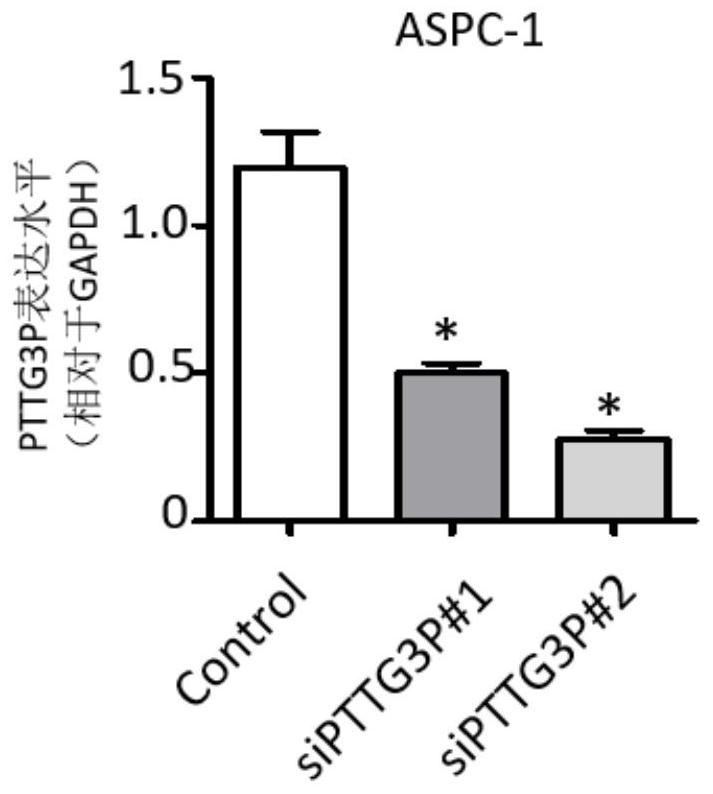Application of pttg3p in preparation of pancreatic cancer diagnostic reagent or kit
A diagnostic kit, pancreatic cancer technology, applied in the field of medical biological detection, to achieve high repeatability, detection sensitivity, and good specificity
- Summary
- Abstract
- Description
- Claims
- Application Information
AI Technical Summary
Problems solved by technology
Method used
Image
Examples
Embodiment 1
[0045] Example 1: Detection of the expression level of PTTG3P in pancreatic cancer and non-cancerous tissues
[0046] 1. Sample collection
[0047] Sixty pairs of pancreatic cancer and paracancerous tissue samples were collected and placed in a -80°C refrigerator. All cases did not receive radiotherapy and chemotherapy before surgery, all patients signed informed consent, and the experimental protocol was approved by the ethics committee of the unit.
[0048] 2. Total RNA extraction
[0049] 1) Take out clinical specimens from the -80°C refrigerator and place them on ice. Weigh 25mg of tissue and place it in a 2ml centrifuge tube, place it on ice, add 1ml Trizol to the centrifuge tube, use a hand-held automatic tissue homogenizer to process until there is no solid component, and let it stand at room temperature for 10 minutes;
[0050] 2) Centrifuge at 13000rpm for 10min at 4°C;
[0051] 3) Pipette the supernatant to a clean RNase-Free 1.5mL centrifuge tube;
[0052] 4) A...
Embodiment 2
[0081] Example 2: Expression of PTTG3P in pancreatic cancer cells
[0082] 1. Cell culture
[0083] Human immortalized pancreatic ductal epithelial cells HPNE, human pancreatic cancer cell lines AsPC-1, BXPC-3, CaPAN-2, MiaPANC-2, PANC-1 and SW1990 were all cultured in DMEM with 10% fetal bovine serum at 37°C, 5 %CO 2 cultured in an incubator.
[0084] 2. RNA extraction
[0085] Discard the medium, wash with PBS twice, add appropriate amount of Trizol, and pipette repeatedly to accelerate cell lysis. All the other steps are the same as in Example 1.
[0086] 3. RT-qPCR
[0087] Concrete steps are with embodiment 1.
[0088] 4. Results
[0089] The result is as figure 2 As shown, compared with pancreatic mucosal epithelial cells, the expression levels of PTTG3P in pancreatic cancer cell lines AsPC-1, BXPC-3, CaPAN-2, MiaPANC-2, PANC-1 and SW1990 were significantly up-regulated, and the difference was statistically significant ( P<0.05 for all).
Embodiment 3
[0090] Example 3: Expression inhibition of PTTG3P
[0091] 1. Cell culture
[0092] Concrete steps are with embodiment 2.
[0093] 2. Design of siRNA
[0094] Use the online siRNA design tool to design two siRNAs for PTTG3P:
[0095] siRNA #1 , CTCAAGTTTCAATATCATGTTTT (SEQ ID NO. 5);
[0096] siRNA #2 , ATCATGTTTTGGCAAAACATTCG (SEQ ID NO. 6).
[0097] 3. Transfection
[0098] Pancreatic cancer cells ASPC-1 were divided into three groups, which were blank control group (transfected with nonsense siRNA), siRNA group #1 (transfection siRNA #1 ) and siRNA group #2 (transfection siRNA #2 ).
[0099] The siRNA concentration was 50nM, and the medium was changed 6 hours after transfection.
[0100] 4. Extraction of total RNA and detection and analysis of PTTG3P expression
[0101] Cell samples were collected after 48 hours, and the subsequent specific steps were the same as in Example 2.
[0102] 5. Results
[0103] The result is as image 3 As shown, compared with the...
PUM
 Login to View More
Login to View More Abstract
Description
Claims
Application Information
 Login to View More
Login to View More - R&D
- Intellectual Property
- Life Sciences
- Materials
- Tech Scout
- Unparalleled Data Quality
- Higher Quality Content
- 60% Fewer Hallucinations
Browse by: Latest US Patents, China's latest patents, Technical Efficacy Thesaurus, Application Domain, Technology Topic, Popular Technical Reports.
© 2025 PatSnap. All rights reserved.Legal|Privacy policy|Modern Slavery Act Transparency Statement|Sitemap|About US| Contact US: help@patsnap.com



